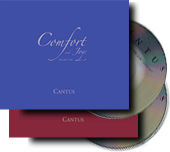old phono pre-amp found in my attic
- Read more about old phono pre-amp found in my attic
- Log in or register to post comments
Hello,
It is obvious that reference loudspeakers in a proper acoustic is by far the best way to monitor a session. But I know that persons like John Atkinson use headphones to monitor the microphone position. But how is it possible to be sure of the best microphone position using headphones? How one can know that the sound will be compatible with a large number of different loudspeakers?
The best,
L.
Why is it that the two big US high end audio magazines are always trashing audio compression, such as saying that MP3s, WMAs, AACs, computer sound systems and iTunes all spell the death of good sound, and yet both magazines have sister publications dedicated to home theater?
The last time I checked, all DVD soundtracks used some form of heavy duty audio compression, with Dolby Digital being the the worst (most compressed) and DTS being somewhat better (less compressed).
In Larry Greenhill's review of the Genelect HTS4B subwoofer, he states "The Velodyne DD-18...includes a sophisticated built-in equalizer, test signals, and setup instructions. While these additional features aren't needed for a home theater system...".
I thought these features were certainly very useful for a HT system. Is that really not the case?
Last week's "Vote" results indicate that readers clearly favor better-sounding recordings. But would a poorly recorded work prevent you from buying it, regardless of the performance or artist?

My house has a neat old fisher/Scott tube stereo built into the wall sadly not used any more but ayways i was in the attic behind the system looking around and i found this neat little General Electric phono pre-amp....can anyone tell me about this and if it is even worth using...although i am a big record collector I always thought that the only reason for a phono pre-amp is if your receiver dosnt support phono. Send a message for more pics
but ayways i was in the attic behind the system looking around and i found this neat little General Electric phono pre-amp....can anyone tell me about this and if it is even worth using...although i am a big record collector I always thought that the only reason for a phono pre-amp is if your receiver dosnt support phono. Send a message for more pics